.webp)
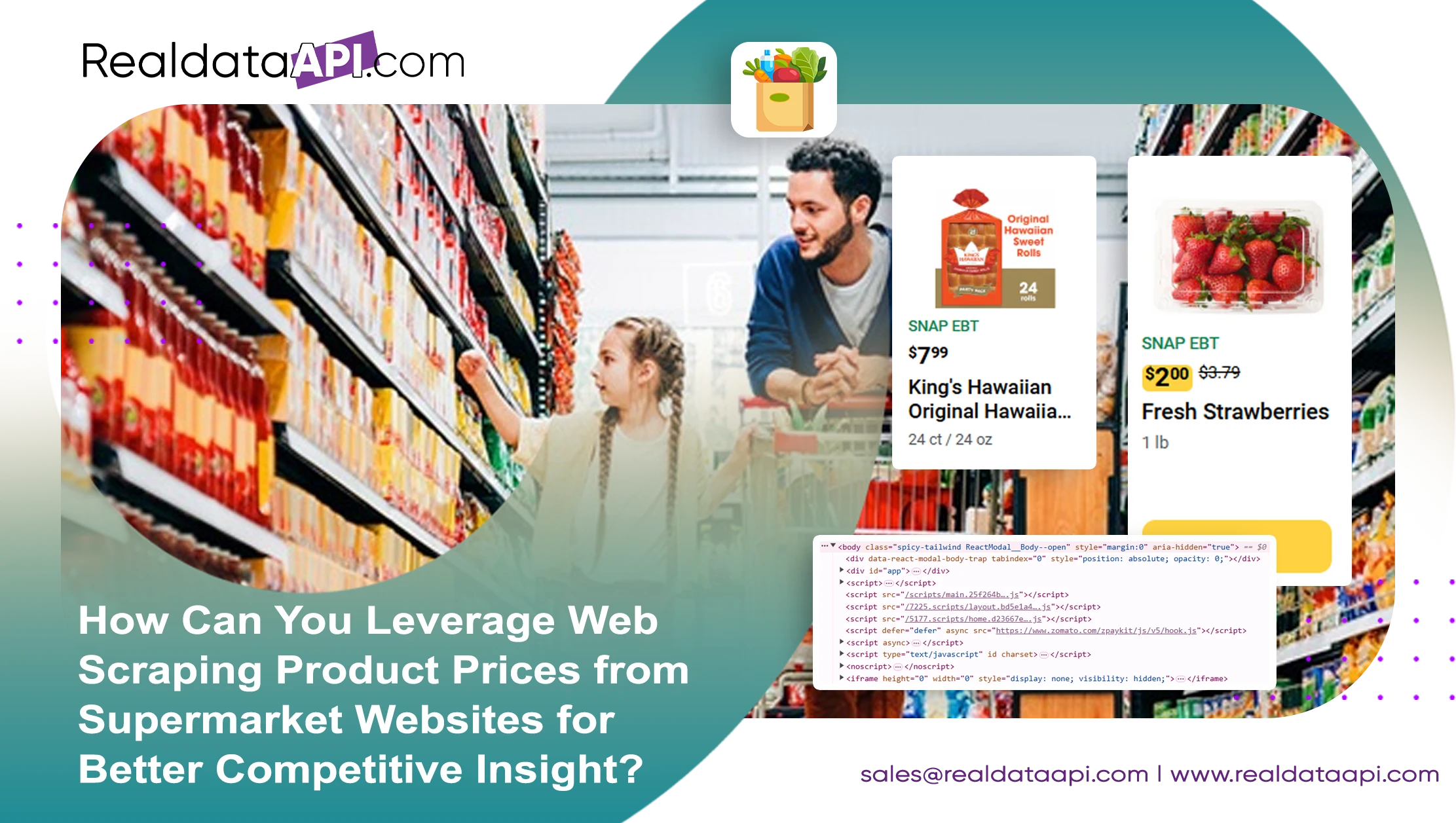
Introduction
In today’s fast-paced retail landscape, businesses face mounting pressure to remain competitive, especially in the grocery sector, where price sensitivity and inventory management are crucial. One of the most effective strategies for gaining a competitive edge is through web scraping product prices from supermarket websites. This practice allows businesses to gather real-time data on pricing, promotions, and inventory levels, enabling them to make informed decisions that drive sales and customer loyalty. This blog will explore how to leverage supermarket price scraping to enhance your competitive insights and optimize your pricing strategies.
Understanding the Importance of Price Scraping in the Grocery Sector
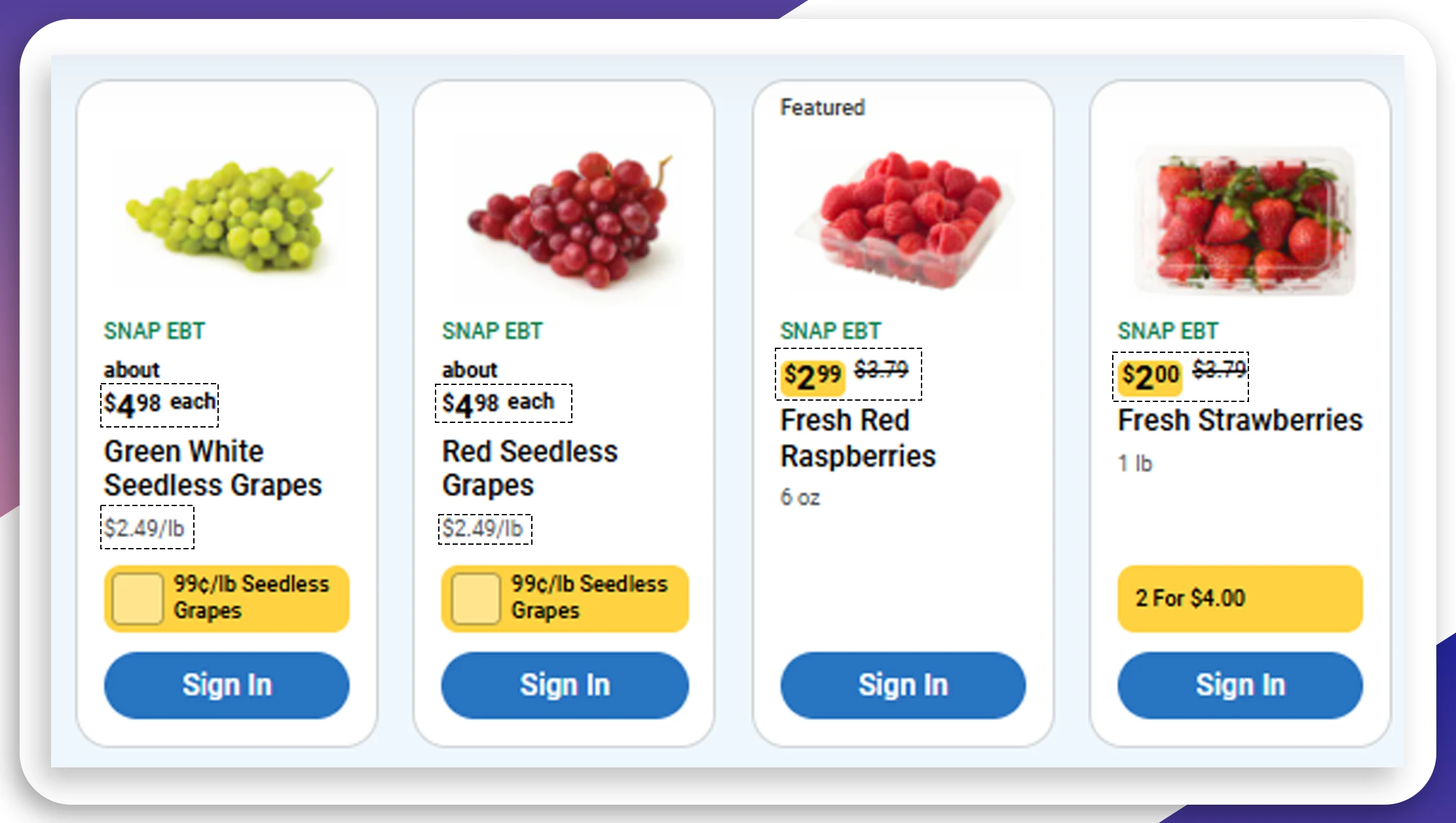
Web scraping product prices from supermarket websites involves extracting data from various grocery platforms to understand how products are priced, what discounts are offered, and how inventory levels fluctuate. This data can inform several aspects of your business strategy, including pricing, marketing, and inventory management.
Recent Statistics Highlighting the Need for Price Scraping
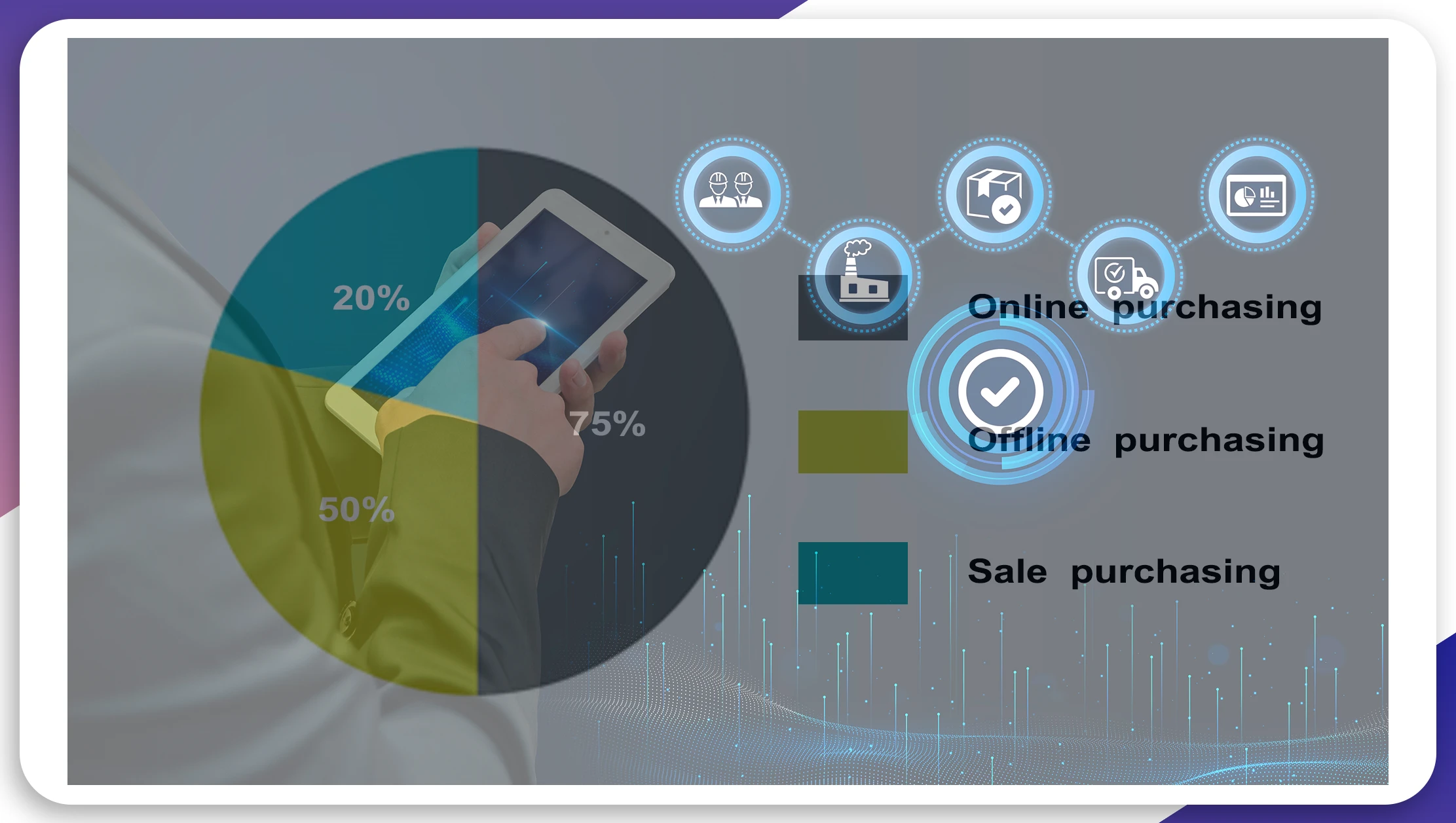
According to a recent report, 75% of consumers compare prices online before purchasing, emphasizing the importance of competitive pricing.
Research indicates that companies using price scraping tools can reduce their pricing errors by 50%, leading to significant cost savings.
Businesses that actively monitor competitor pricing through web scraping can increase their sales by up to 20% within six months.
Given these statistics, it’s clear that leveraging a supermarket price scraping API is advantageous and essential for modern grocery retailers.
Key Benefits of Web Scraping Product Prices from Supermarket Websites
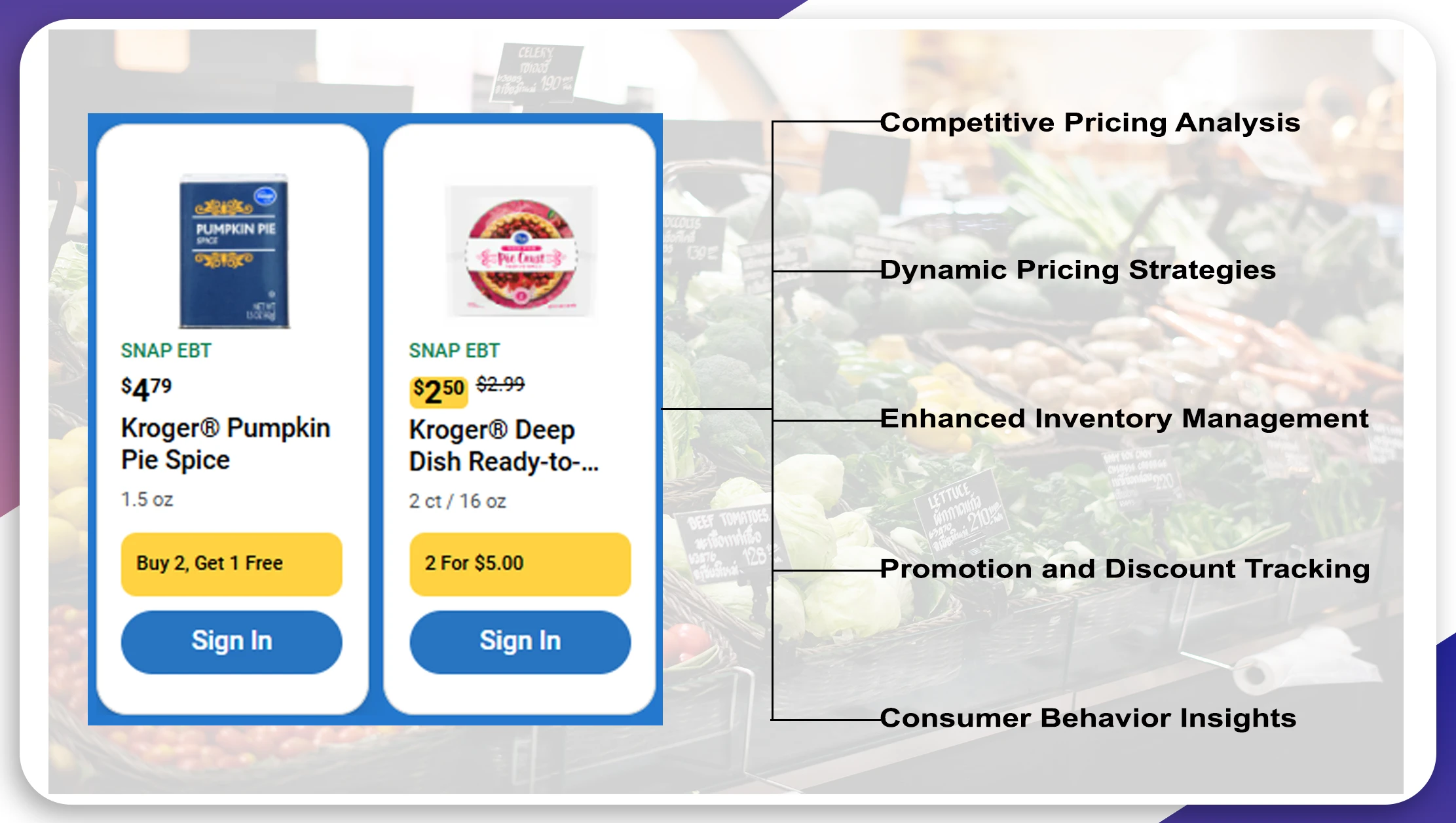
Competitive Pricing Analysis
One of the primary benefits of scraping supermarket product prices is the ability to conduct comprehensive competitive pricing analysis. By monitoring how competitors price their products, you can adjust your pricing strategy. This ensures that your prices remain attractive to consumers while maintaining your profit margins.
Dynamic Pricing Strategies
With real-time data obtained from supermarket price data extraction, businesses can implement dynamic pricing strategies that respond to market changes instantly. For example, if a competitor lowers their price on a popular item, your business can quickly adjust its prices to match or offer a competitive deal.
Enhanced Inventory Management
Scraping product prices for inventory management enables businesses to track product availability across various stores. This insight helps maintain optimal inventory levels, reducing stockouts and overstock situations. By understanding which items are in high demand, you can stock your inventory accordingly, ensuring customer satisfaction.
Promotion and Discount Tracking
By using an API to scrape supermarket product prices, businesses can monitor promotional activities and discounts offered by competitors. This lets them craft their promotions strategically, potentially increasing foot traffic and online sales during peak shopping.
Consumer Behavior Insights
Understanding how prices fluctuate can reveal insights into consumer behavior. For instance, if certain products consistently sell better at specific price points, you can adjust your pricing strategy to capitalize on these insights. Supermarket data scraping allows you to analyze patterns over time, informing future marketing efforts and inventory decisions.
How to Implement Price Scraping Effectively

To successfully implement web scraping product prices from supermarket websites, follow these best practices:
1. Choose the Right Tools and APIs
Select a reliable supermarket price scraping API that provides accurate data and is easy to integrate with your existing systems. The right API can simplify the process of extracting data from multiple sources, saving you time and resources.
2. Define Your Data Goals
Clearly define what data you want to scrape. Do you want to focus solely on prices, or are you also interested in product details, inventory levels, and promotions? Having specific goals will help you streamline your scraping process and ensure you’re gathering relevant information.
3. Automate the Scraping Process
Automation is key to effective web scraping . Set up regular automated scraping processes to ensure you receive up-to-date data without manual intervention. This will enable your business to react quickly to market changes and competitor actions.
4. Monitor and Adjust Your Strategy
Review the data you gather regularly to assess its effectiveness in achieving your goals. If certain strategies aren’t yielding the desired results, adjust your approach based on the insights obtained from your grocery data scraping efforts.
5. Ensure Compliance with Legal Regulations
It’s essential to ensure that your scraping activities comply with legal regulations. Familiarize yourself with the terms of service of the websites you are scraping and adhere to ethical data collection practices. This will help you avoid potential legal issues in the future.
Real-World Applications of Price Scraping
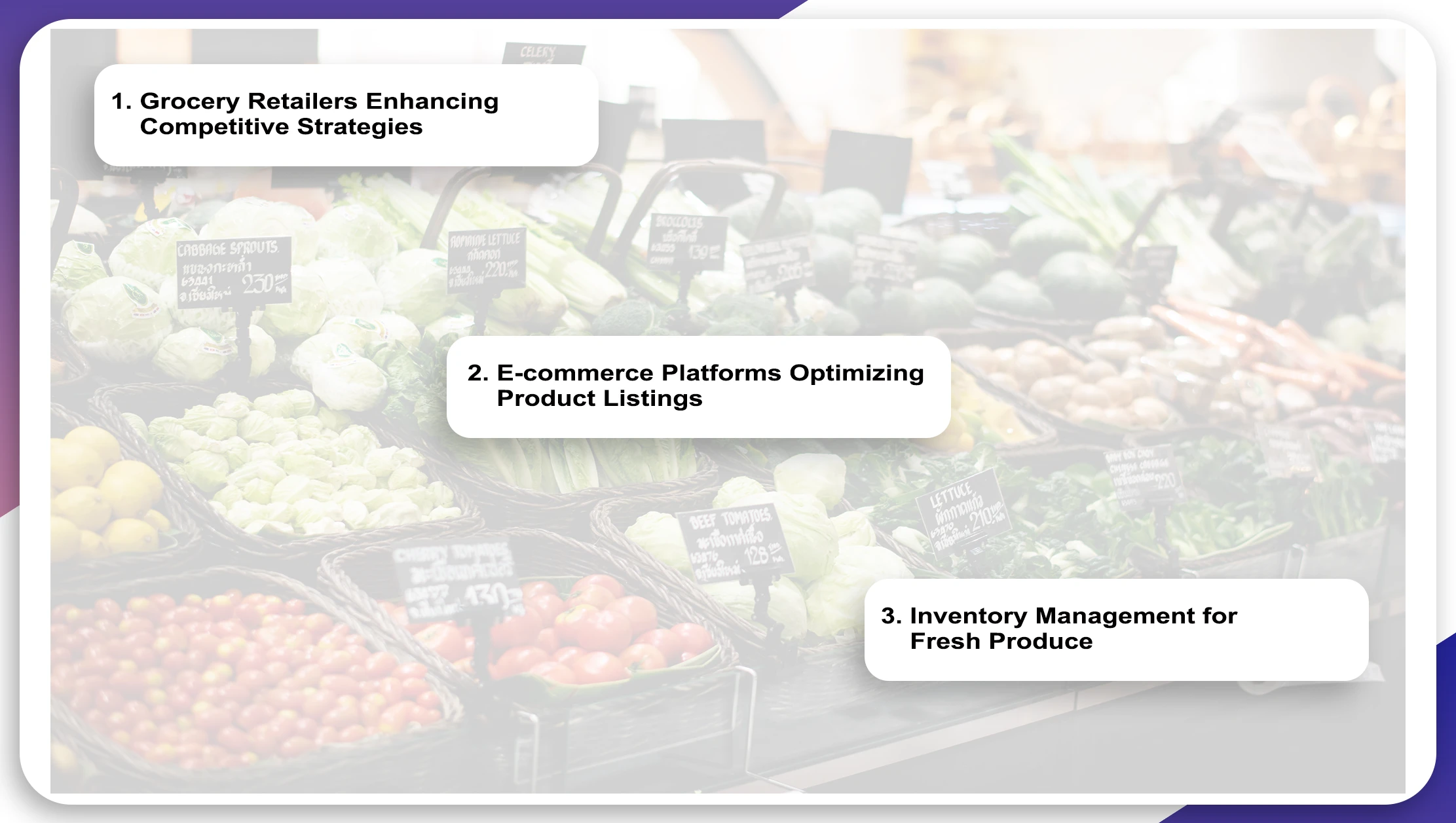
Many businesses have successfully implemented web scraping product prices from supermarket websites to improve their operations. Here are a few examples:
1. Grocery Retailers Enhancing Competitive Strategies
A mid-sized grocery retailer implemented a supermarket price scraping API to monitor competitor prices daily. Analyzing the data, they identified trends that allowed them to adjust their prices strategically. This led to a 15% increase in sales within three months as customers began to favor their store over competitors.
2. E-commerce Platforms Optimizing Product Listings
An e-commerce grocery platform utilized API to scrape product prices from grocery websites and compare their pricing against local supermarkets. They discovered opportunities to lower prices on key items, resulting in increased conversion rates and higher customer satisfaction. The strategic adjustments made based on real-time data led to a 30% increase in website traffic.
3. Inventory Management for Fresh Produce
A grocery chain focused on fresh produce used to scrape supermarket product prices for inventory management. They optimized their ordering process by tracking pricing and inventory levels and reduced waste by 20%. This improved their bottom line and enhanced customer satisfaction by ensuring fresh stock availability.
Challenges of Web Scraping Product Prices
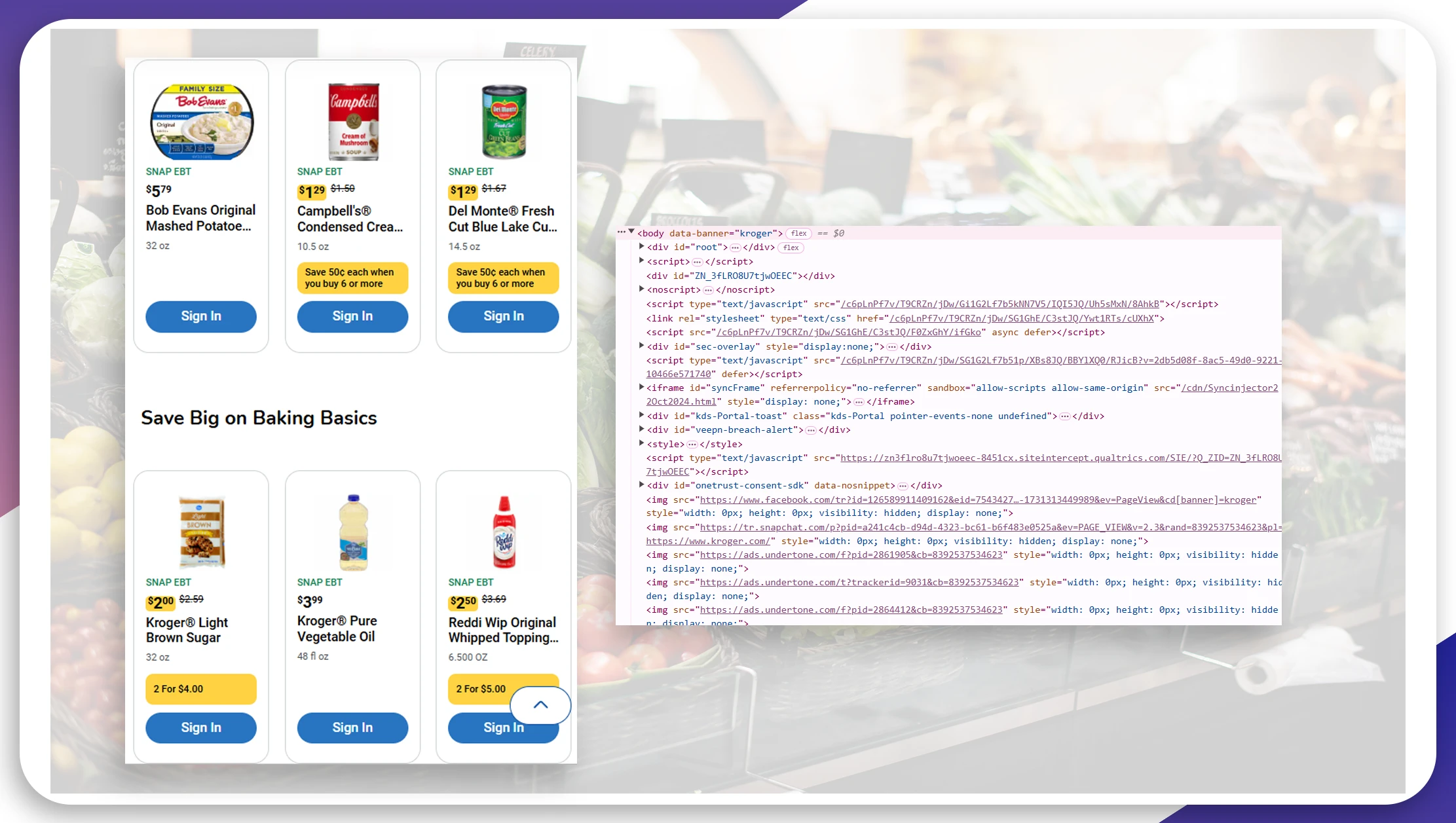
While web scraping offers numerous benefits, it’s not without its challenges. Here are a few common obstacles businesses may face:
Data Accuracy: It is crucial to ensure the accuracy of scraped data. Inaccurate data can lead to poor decision-making and financial losses. Regularly validating your data sources can help mitigate this risk.
Website Changes: Websites often update their layouts and structures, which can disrupt scraping processes. A flexible scraping solution that can adapt to these changes quickly is essential.
Compliance Issues: As mentioned earlier, legal regulations surrounding web scraping can vary. Ensure that your scraping practices comply with local laws to avoid potential legal repercussions.
Technical Limitations: Implementing and maintaining scraping technology can be resource-intensive. A dedicated team or partner, such as Real Data API, can help alleviate some of these burdens.
Conclusion
In an increasingly competitive grocery market, leveraging web scraping product prices from supermarket websites is a powerful strategy for gaining valuable insights and optimizing business operations. Businesses can make data-driven decisions that enhance their competitive edge by understanding competitor pricing, monitoring inventory, and tracking promotions.
For businesses looking to capitalize on these benefits, Real Data API offers a powerful Grocery Delivery API solution tailored to meet the unique needs of grocery retailers. With Real Data API, you can extract grocery store data, monitor competitor prices, and track inventory levels effortlessly. Take the next step towards data-driven grocery retail—Contact Real Data API today and unlock the full potential of real-time grocery data.













